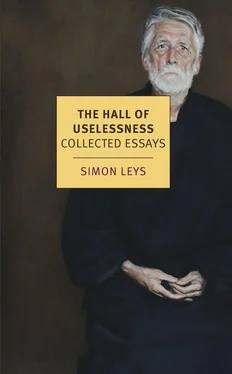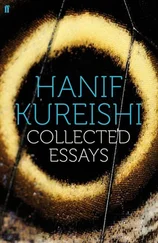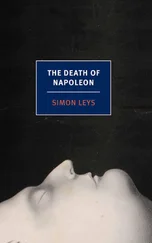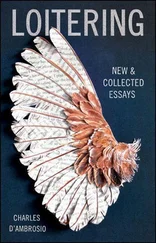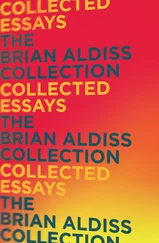China is a world. Any tourist who has just spent two weeks there will tell you that much. (Though, in this case, I wonder if it is not a misunderstanding, as I doubt that the People’s Republic has actually succeeded in preserving the universality that defined Chinese culture for some 3,000 years. Of course, it is obviously too early now to attempt an evaluation of thirty years of illiterates’ rule. But this is another story.)
Still, when it is applied to traditional China, this old cliché—as is often the case with commonplace statements — covers a truth that runs much deeper than one usually suspects while uttering it.
More exactly, one should say that China is a certain world view, a way of conceiving the relations between man and the universe — a recipe for cosmic order.
The key concept of Chinese civilisation is harmony ; whether it is a matter of organising human affairs within society or of attuning individuals to universal rhythms, this same search for harmony equally motivates Confucian wisdom and Daoist mysticism. In this respect, both schools appear complementary rather than antagonistic, and their main difference pertains to their area of application — social, exterior and official for the former; spiritual, interior and popular for the latter.
The various currents of Chinese thought all spring from one common cosmological source. This cosmology (its system is schematically summarised in the most ancient, precious and obscure of all Chinese canonical treatises, The Book of Changes ) describes all phenomena as being in a ceaseless state of flux. Permanent creation itself results from the marriage of two forces that oppose and complement each other. These two forces — or poles — represent a diversification of “having.” “Having,” in turn, is a product of “non-having” ( wu ),[3] a concept that is constantly mistranslated as “nothingness,” whereas it rather corresponds to what Western philosophy would call “being.” The Chinese thinkers have wisely considered that “being” can only be grasped negatively : the Absolute that could be defined and named, that could have qualifications, properties and characteristics, or that could lend itself to all the limitations of a positive description, obviously cannot be the true Absolute — it merely belongs to the realm of “having,” with its ephemeral and kaleidoscopic flow of phenomena. The process that we just sketched here does not form a mechanical chain, nor is it the outcome of a causal sequence. It could be better described as an organic circle within which various stages can simultaneously co-exist. In the earliest texts, “non-having” seems sometimes to precede “having,” but in later commentaries their relation is described in the form of an exchange, a dialectical union of complementary opposites, giving birth to one another.[4] “Being” is the fecund substratum, the field where “having” germinates — or, to put it in other words, emptiness is the space where all phenomena are nurtured. Thus, “being” can only be grasped in its hollowness; it is only its absence that can be delineated, in the same fashion as an intaglio seal shows its pattern through a blank: it is the absence of matter that reveals the design. The notion that the Absolute can be suggested only through emptiness presents momentous implications for Chinese aesthetics, as we shall see later.
It is by cultivating the arts that a gentleman can actually realise the universal harmony that Chinese wisdom ascribes as his vocation: the supreme mission of a civilised man is to grasp the unifying principle of things, to set the world in order, to put himself in step with the dynamic rhythm of Creation.
The arts are essentially poetry, painting and calligraphy; music should also be included here (for the Chinese scholar, music means only the zither qin ); however, my incompetence in the latter field shall unfortunately prevent me from making more than passing reference to it.
A gentleman practises the arts in order to realise his own humanity. For this very reason, unlike all crafts (sculpture, carving, architecture, music played on vulgar instruments and so forth), no art could constitute a professional, specialised activity. One should naturally be competent in all matters pertaining to poetry, calligraphy and painting inasmuch as one is a gentleman, and no one, unless he is a gentleman, can achieve this competence. By definition, such fundamental activities can only be pursued by non-professionals; when it comes to living, aren’t we all amateurs?
PAINTING AND POETRY
One exemplary figure embodied the union of painting and poetry: Wang Wei (699–761). He was one of China’s greatest poets, and as a painter he has been credited with the invention of a new style that was eventually to constitute what is conventionally described today as “Chinese painting”—monochrome ink landscape executed with a calligraphic brush.
Su Dongpo (1036–1101), himself a very versatile literary and artistic genius of no lesser stature, commented on this subject: “In every poem by Wang Wei there is a painting, and in every one of his paintings there is a poem.” This observation was subsequently quoted so often that it became a cliché. We must attempt to rediscover its original meaning and restore its full impact.[5]
First, this famous statement can be taken as a factual description. Consider, for instance, the following verses:
River waves flow beyond the world
Mountain mass hangs in half-emptiness…
When we read these words, they immediately conjure a vision that countless paintings have made familiar to us: a river flows towards a destination that lies beyond the page, carrying away a lonely little boat or a couple of drifting ducks, whereas in the empty expanse of the silk, a few faint touches of ink hint that, somewhere above the invisible riverbank, a mountain must be hiding in the mist.
However pertinent such a visual association may appear, we should keep in mind that this type of pictorial parallel is based on an anachronism: what the Tang poem just suggested is in fact a Song painting, which came into existence only some 300 years later! As for Wang Wei’s own paintings, although no original survives, the kind of image that various indirect witnesses enable us to reconstruct seems oddly out of place with the type of vision suggested by his poems. In contrast with the fluid and subtle economy of the poems, most probably his pictorial style was still painstakingly detailed and not yet free from archaic linear stiffness.
Moreover, if it is not wrong to say that painting and poetry express two sides of the same inspiration, it should be observed that it was only in the Yuan period — six centuries after Wang Wei — that scholars began to inscribe poems on their paintings, or to trace paintings under their poems, with the same brush and under the same impulsion. Wang Wei, painter and poet, may provide a convenient symbol of the union of these two arts; yet, in fact, his historical activity has very little relevance for our topic. The real meaning of Su Dongpo’s statement lies elsewhere — and it could be summarised in a double axiom, which we shall try to analyse: The aesthetic principles and expressive techniques of poetry have a pictorial character. The aesthetic principles and expressive techniques of painting have a poetical character.
Whereas any poem, by its very nature, is normally expressed in the form of a sequence unfolding in time , Chinese poetry attempts, in a way, to fit words in space .[6] The spatial potential of the Chinese poem can be grasped first on a superficial level, if we simply consider the fact that the poem can, and should, be calligraphed; in this calligraphic form it can be exhibited and contemplated just like a painting. However, the spatial quality of the poem is not merely an outcome of Chinese writing; it has a much more essential origin, which is to be found in the very structure of the language. This could be well illustrated, for instance, by the use and technique of the “parallel verses,” which constitute a basic device of Chinese poetry.
Читать дальше
